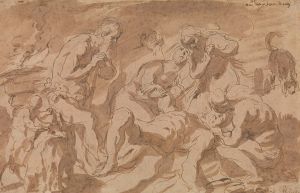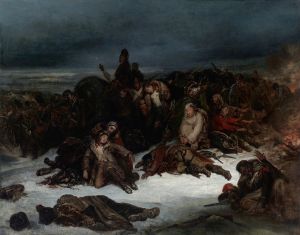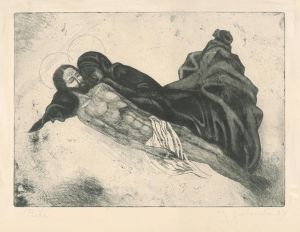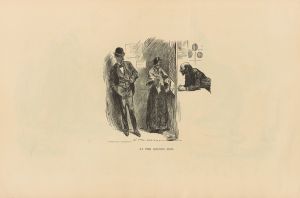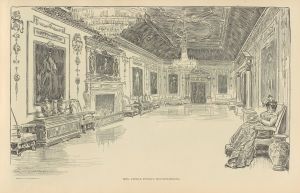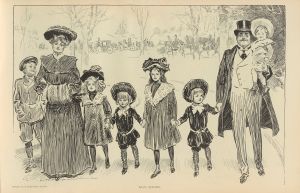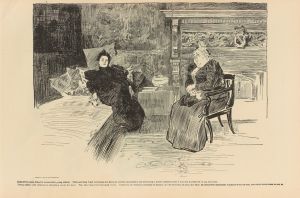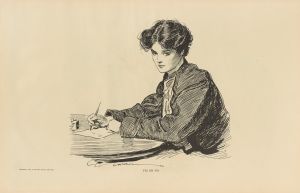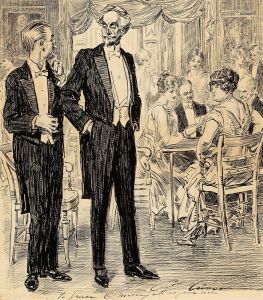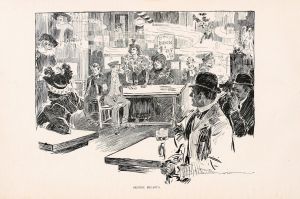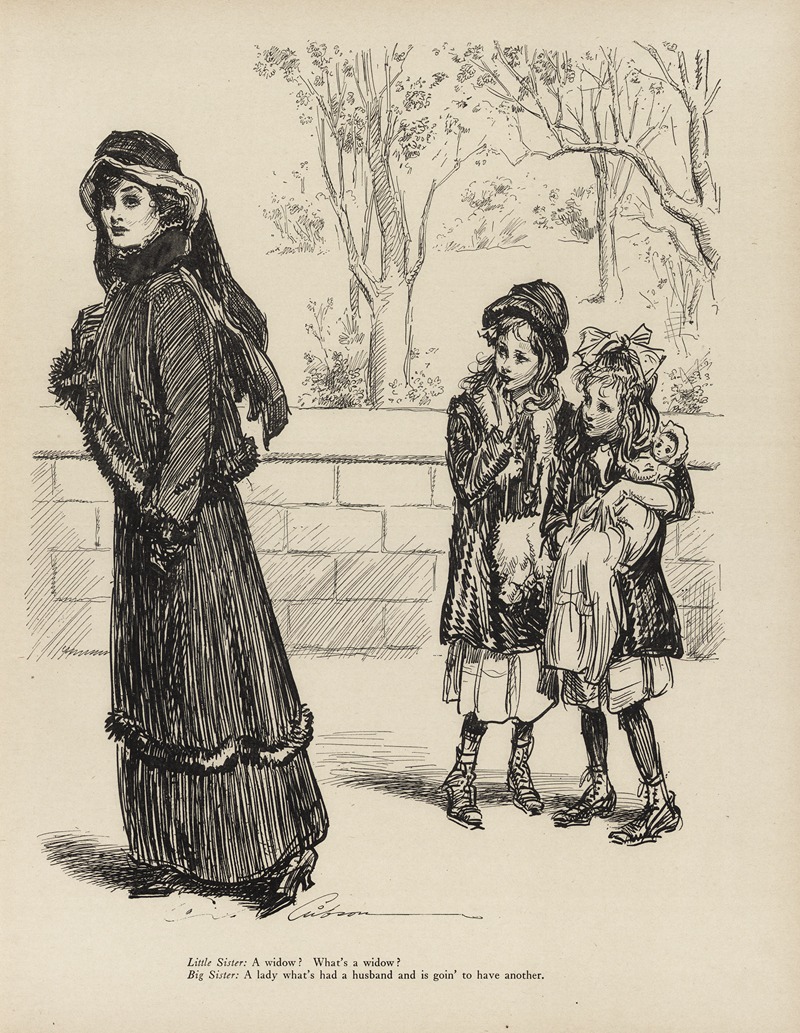
Little Sister; A Widow, Whats a Widow
A hand-painted replica of Charles Dana Gibson’s masterpiece Little Sister; A Widow, Whats a Widow, meticulously crafted by professional artists to capture the true essence of the original. Each piece is created with museum-quality canvas and rare mineral pigments, carefully painted by experienced artists with delicate brushstrokes and rich, layered colors to perfectly recreate the texture of the original artwork. Unlike machine-printed reproductions, this hand-painted version brings the painting to life, infused with the artist’s emotions and skill in every stroke. Whether for personal collection or home decoration, it instantly elevates the artistic atmosphere of any space.
Charles Dana Gibson was an influential American illustrator, best known for his creation of the "Gibson Girl," an iconic representation of the independent and fashionable American woman at the turn of the 20th century. His illustrations captured the spirit of the era and were widely published in magazines such as Life, Harper's Weekly, and Scribner's.
"Little Sister; A Widow, What's a Widow" is one of Gibson's works that reflects his keen observation of social dynamics and gender roles during his time. While specific details about this particular illustration are limited, it is consistent with Gibson's style and thematic focus. His works often depicted scenes of social interaction, highlighting the nuances of relationships and societal expectations.
Gibson's illustrations were characterized by their detailed line work and expressive characters. He had a talent for capturing the subtleties of human expression and posture, which allowed him to convey complex social narratives with clarity and wit. His art was not just about fashion or beauty; it often included a satirical edge, commenting on the social mores and gender roles of the late 19th and early 20th centuries.
The "Gibson Girl" became a cultural phenomenon, representing the idealized American woman who was both beautiful and independent. This figure was often portrayed in various social settings, navigating the expectations placed upon her by society. Through his illustrations, Gibson explored themes of femininity, independence, and the evolving roles of women, which were subjects of significant public interest during his lifetime.
In "Little Sister; A Widow, What's a Widow," Gibson likely continued his exploration of these themes, using his art to comment on the societal perceptions of women, particularly in the context of widowhood. During Gibson's era, widows occupied a unique social position, often facing both sympathy and scrutiny. The title itself suggests a dialogue or an exploration of the concept of widowhood, possibly highlighting the innocence or naivety of a "little sister" character in understanding the complexities associated with being a widow.
Gibson's work remains significant for its artistic merit and its reflection of the cultural attitudes of his time. His ability to blend humor, social commentary, and artistic skill made his illustrations enduringly popular and influential. While specific information about "Little Sister; A Widow, What's a Widow" is scarce, it can be appreciated as part of Gibson's broader body of work that continues to offer insights into the social fabric of the early 20th century America.







